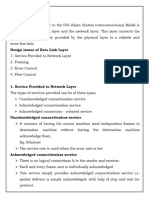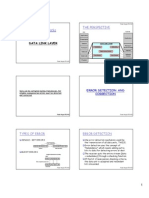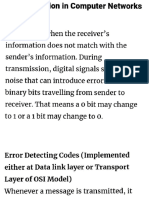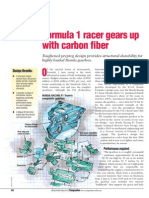0% found this document useful (0 votes)
8 views84 pagesData-Link-Layer Design Issue
The data link layer, Layer 2 of the OSI model, encodes, decodes, and organizes data bits into frames for transport between adjacent nodes in a LAN or WAN, while managing collision recovery. It consists of two sublayers: Logical Link Control (LLC) and Media Access Control (MAC), and frames include a header, payload, trailer, and flags. Cyclic Redundancy Check (CRC) is used for error detection by appending zeros, performing binary division, and checking the remainder to ensure data integrity.
Uploaded by
Priksha SharmaCopyright
© © All Rights Reserved
We take content rights seriously. If you suspect this is your content, claim it here.
Available Formats
Download as PPTX, PDF, TXT or read online on Scribd
0% found this document useful (0 votes)
8 views84 pagesData-Link-Layer Design Issue
The data link layer, Layer 2 of the OSI model, encodes, decodes, and organizes data bits into frames for transport between adjacent nodes in a LAN or WAN, while managing collision recovery. It consists of two sublayers: Logical Link Control (LLC) and Media Access Control (MAC), and frames include a header, payload, trailer, and flags. Cyclic Redundancy Check (CRC) is used for error detection by appending zeros, performing binary division, and checking the remainder to ensure data integrity.
Uploaded by
Priksha SharmaCopyright
© © All Rights Reserved
We take content rights seriously. If you suspect this is your content, claim it here.
Available Formats
Download as PPTX, PDF, TXT or read online on Scribd
/ 84




























































































